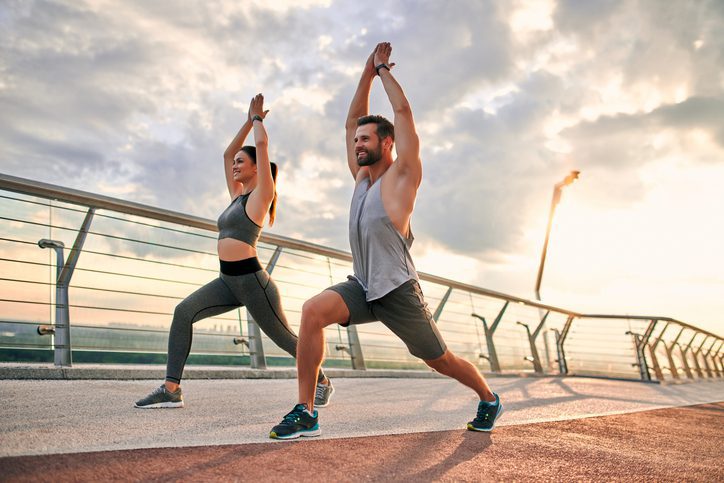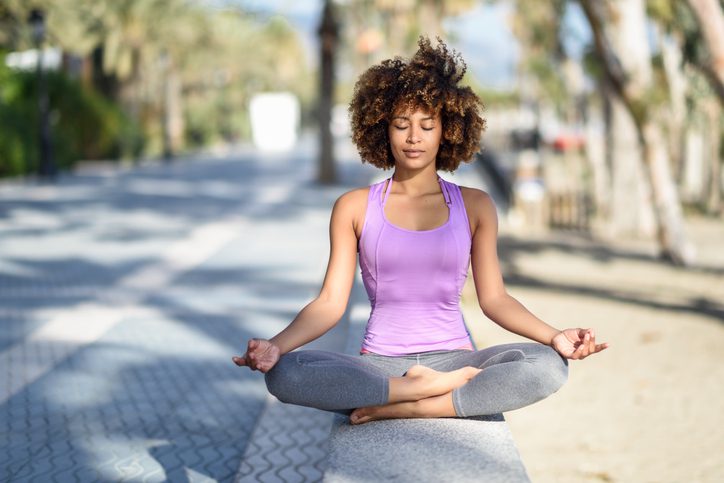Yoga for triathletes: Back to Basics
Looking to add some gentle yoga to your training routine? Here's how to get started.

It’s almost spring—when many runners and triathletes begin to ramp up mileage as they gear up for an exciting season of races and goals. Swimming, biking and running may invigorate the body and soul, strengthen joints and improve overall fitness, but every dedicated triathlete and runner knows that with increased time spent pounding the pavement occasionally comes some sore and achy muscles. Enter yoga—the perfect antidote to a strenuous exercise program, and a gentle mental relaxation practice for our busy lifestyles.
While the benefits are well-documented, stepping onto a yoga mat for the first time can be daunting. The sea of unfamiliar poses and the seemingly effortless contortions of seasoned yogis may leave runners feeling like fish out of water. Fear not! We’re breaking down the basics of yoga for runners and triathletes, making it accessible and highlighting four essential poses that can transform your training game.

Mountain pose (Tadasana)
Mountain pose helps runners improve posture and balance and strengthens the legs, ankles and core. Incorporating this pose into your routine can enhance your proprioception (knowing instinctively where the ground is when you take a step) during runs, and help promote efficient and mindful movement.
Begin by standing tall with your feet together and your weight evenly distributed. Engage your thighs, lift your chest, and roll your shoulders back and down.
Reach your arms alongside your body, with palms facing forward. Feel the grounding energy through your feet, and take deep breaths. Hold for 30 seconds-one minute, relax and give your arms and legs a shake.
Warrior II (Virabhadrasana II)
Warrior II builds strength in the legs and hips, enhancing stability and stamina for runners. It also opens the chest and stretches groin muscles, alleviating tension accumulated during runs.
Begin in mountain pose. Step one foot back, keeping the front knee directly above the ankle.
Open your hips and shoulders to face the side, extending your arms parallel to the floor. Gaze over your front hand, grounding through the outer edge of the back foot. Reach out through your fingertips and take deep, full breaths, holding for a count of 10 to begin.
Downward-facing dog (Adho Mukha Svanasana)
Downward-facing dog stretches and strengthens the entire body, particularly the calves, hamstrings and Achilles tendons. It also opens up the shoulders and lengthens the spine, providing relief for runners who experience a lot of tightness and discomfort.
Begin in a tabletop pose, on your hands and knees, with wrists under your shoulders and knees under your hips. Press your hips towards the ceiling and straighten your legs, while keeping a slight bend in the knees if needed.
Press your palms into the mat, and let your head hang freely between your arms. To intensify this one, press heels down onto the mat, then lift up onto your tiptoes—try alternating lifting one heel while pressing the other down (sometimes called “walking the dog”). Hold for 10 seconds and release, returning to tabletop.
Pigeon pose (Eka Pada Rajakapotasana)
Pigeon pose is the perfect stretch for runners who suffer from tight hips—it releases tension in the hip flexors and helps prevent common issues like IT band syndrome. Regular practice will boost flexibility while reducing reduce the risk of injuries associated with tight hips. Pigeon pose can be challenging, so take your time easing into this one, and don’t force it.
Starting from a tabletop position, bring one knee forward towards the wrist, with the other leg extended out behind you.
Lower your hips towards the mat, feeling a deep stretch in the hip flexors and glutes. Keep your front foot flexed to protect the knee. Stay upright here, or, to go deeper, gently lower your chest and head toward your front leg and the mat. Let your head hang heavy, or support it with a yoga block, stack of books or some cushions. Hold for 30 seconds-one minute to start and work up to relaxing into the pose for several minutes at a time.
As you incorporate these fundamental yoga poses into your routine, remember to be gentle with your body and increase intensity slowly. Each stretch brings you closer to a more balanced, flexible and resilient running experience.
This story originally appeared on runningmagazine.ca
